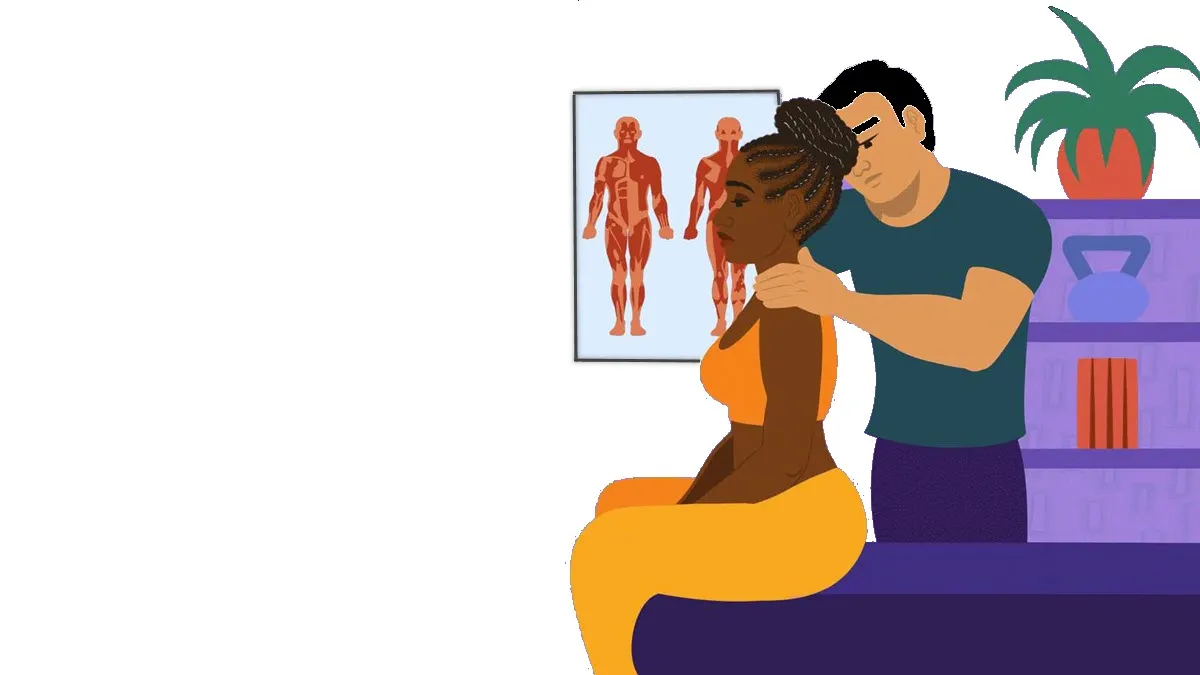Introduction
Sesamoiditis is a painful condition resulting from chronic inflammation of the sesamoid bones and their tendons, usually caused by overuse and compression. These bones, located under the head of the first metatarsal, are unique in their connection to muscles via tendons and play a crucial role in the mobility of the foot. Unlike most bones that articulate with each other, the sesamoids act as dynamic pulleys, facilitating the movement of the big toe and the transmission of muscular forces throughout the body.
People most likely to develop sesamoiditis are often those who engage in high-impact activities, such as running, high jumping, or ballet. Repetitive strain injuries resulting from these activities can lead to inflammation of the tissues surrounding the sesamoids. In addition, excessive compression due to intensive activities or biomechanical abnormalities of the foot can also contribute to the occurrence of sesamoiditis.
Symptoms of sesamoiditis usually include pain under the big toe, tenderness to the touch, swelling, and difficulty bending the big toe. The pain may worsen when walking, running, or flexing the big toe, and a limp may develop to relieve pressure on the affected area.
Treatment for sesamoiditis can include several approaches. In mild cases, it is recommended to reduce high-impact activities and relieve pressure on the sesamoids by using cushions in shoes. Immobilization of the foot with a cast or movable cast may also be necessary to allow healing. Physical therapy, including exercises to strengthen and condition the foot, can help restore function and prevent recurrence.
For long-term management, custom orthotics may be prescribed to balance pressure on the ball of the foot and reduce stress on the sesamoids. In severe cases of sesamoiditis, surgery may be necessary to correct anatomical abnormalities or to remove damaged tissue.

Causes of sesamoiditis
Sesamoiditis, a painful condition characterized by chronic inflammation of the sesamoid bones and their tendons, can be triggered by a variety of underlying factors. The causes of this condition are often related to a combination of repetitive strain injuries, excessive compression, anatomical abnormalities, and sudden changes in physical activity.
First of all, repetitive strain injury is one of the main causes of sesamoiditis. People who participate in high-impact activities, such as running, high jumping, ballet, or other sports that frequently put stress on the feet, are particularly at risk. Repetitive foot movements, combined with excessive loading while walking or running, can place increased pressure on the sesamoids, leading to irritation and inflammation of the surrounding tissues.
Next, excessive compression of the sesamoid bones is a common contributing factor to sesamoiditis. Normally, the sesamoids are under some pressure during walking and running, but excessive compression due to intensive activities or biomechanical abnormalities of the foot can significantly increase this pressure. For example, wearing inappropriate shoes, such as heels that are too high or shoes that do not provide adequate support, can increase pressure on the sesamoid bone region and contribute to the development of sesamoiditis.
Additionally, certain anatomical abnormalities can also increase the risk of developing sesamoiditis. People with abnormalities such as abnormal bone structure or tendons that put excessive pressure on the sesamoid bones are more likely to develop this condition. These abnormalities can create additional stress on the sesamoids, increasing the risk of irritation and inflammation of surrounding tissues.
Finally, sudden changes in physical activity may also play a role in triggering sesamoiditis. A sudden increase in the intensity or duration of physical activities, especially those that put stress on the feet, can overload the sesamoid bones and lead to inflammation. People who transition from a sedentary to a more active lifestyle or who suddenly increase the intensity of their training are particularly vulnerable to this type of injury.
In summary, sesamoiditis can be triggered by a combination of repetitive strain injury, excessive compression, anatomical abnormalities, and sudden changes in physical activity. Understanding these underlying causes is essential to effectively preventing and treating this painful condition.
- High-impact activities: Sports or activities that involve repetitive movements, jumping, or significant pressure on the front of the foot can contribute to the development of sesamoiditis. This includes activities like running, high jumping, ballet, and other sports that put frequent strain on the feet.
- Sudden changes in activity: A sudden increase in the intensity or duration of physical activities, especially those that put stress on the feet, can overload the sesamoid bones and lead to inflammation.
- Anatomical abnormalities: Some people may have anatomical abnormalities, such as abnormal bone structure or tendons that put excessive pressure on the sesamoid bones, increasing the risk of sesamoiditis.
- Wearing Inappropriate Shoes: Shoes that do not provide adequate support, are too tight, or have heels that are too high can contribute to sesamoiditis by increasing pressure on the sesamoid bone region.
- Direct trauma: Direct trauma, such as a fall or a direct blow to the sesamoid bone region, can also cause inflammation.
- Genetic predisposition: Some people may be genetically predisposed to developing problems related to the sesamoid bones.
Why does the big toe have two sesamoid bones compared to all the other toes?
The presence of two sesamoid bones beneath the great toe (hallux) is primarily due to the unique biomechanical demands and functions of this part of the foot. The sesamoid bones serve several important purposes, including providing a smooth surface for tendon gliding, protecting the tendon from excessive wear and tear, and increasing the mechanical advantage of the muscle-tendon unit.
The great toe, being critical for activities such as walking, running, and maintaining balance, experiences significant stress and pressure during these movements. The presence of two sesamoid bones beneath the great toe helps to distribute and absorb this stress more effectively. Additionally, the presence of two sesamoids allows for increased flexibility and adaptability in the movement of the great toe, enabling it to bend and flex more efficiently to accommodate various surfaces and movements.
In contrast, the other toes do not typically require the same degree of flexibility and mobility as the great toe. They primarily function to provide stability and support during locomotion rather than bearing the brunt of weight-bearing activities. Therefore, the presence of sesamoid bones beneath the other toes is less necessary from a biomechanical standpoint.
Overall, the presence of two sesamoid bones beneath the great toe reflects the unique anatomical and functional requirements of this important part of the foot, highlighting the remarkable adaptability and efficiency of the human musculoskeletal system in responding to the demands of locomotion and weight-bearing activities.
Symptoms of sesamoiditis
Symptoms of sesamoiditis are characterized by a range of painful and uncomfortable manifestations, often localized in the region of the sesamoid bones and big toe. Pain under the big toe is one of the most common and identifiable symptoms of this condition. This pain can vary in intensity, from a tingling or burning sensation to a throbbing, persistent pain, depending on the degree of inflammation and physical activity.
Sensitivity to touch is also a common symptom of sesamoiditis. The sesamoid bone region may be tender to touch, and direct palpation of the affected area may cause increased pain. This sensitivity to touch can limit the ability to wear shoes comfortably and worsen pain while walking or running.
Swelling in the sesamoid bone area is another common symptom of sesamoiditis. Inflammation of surrounding tissues can lead to swelling in the affected area, which may be visible and palpable. Swelling can also contribute to stiffness and reduced mobility in the big toe, worsening discomfort and pain.
Besides pain, difficulty bending the big toe is a symptom commonly seen in people with sesamoiditis. Due to inflammation and sensitivity of the surrounding tissues, it may be difficult to bend the big toe or perform flexion or extension movements without feeling pain or discomfort.
Lameness may also develop as a symptom of sesamoiditis. Due to the pain and discomfort associated with this condition, an affected person may adopt a limping gait to relieve pressure on the affected area. This lameness may be more pronounced when walking or running and can affect quality of life and participation in physical activities.
Finally, sesamoiditis can cause a range of associated symptoms, such as redness or warmth in the sesamoid bone region, decreased muscle strength in the foot, or decreased ability to perform normal physical activities. These symptoms may vary depending on the severity of the condition and individual response to treatment.
- Pain under the big toe: The pain is usually located under the head of the first metatarsal, where the sesamoid bones are located.
- Pressure pain: Pain may be worse when direct pressure is applied to the affected area, such as when walking, running, or flexing the big toe.
- Swelling: Inflammation of the sesamoid bones can lead to swelling in the area.
- Difficulty bending the big toe: Due to pain and inflammation, it may be difficult to bend the big toe.
- Lameness: Due to pain, a person with sesamoiditis may adopt a limping gait to relieve pressure on the affected area.
- Tenderness to touch: The sesamoid bone region may be tender to touch, and direct palpation may cause pain.
Pathophysiology of sesamoiditis
The pathophysiology of sesamoiditis involves a complex process that results from several interconnected mechanisms. At the heart of this condition is repetitive strain injury, which is often the primary cause of chronic inflammation of the sesamoid bones and their tendons.
Repetitive strain injuries typically occur due to prolonged exposure to high-impact activities, such as running, jumping, or dancing, which place excessive stress on the sesamoid bones. These microtraumas can be exacerbated by biomechanical abnormalities of the foot, such as excessive pronation or joint instability, which increase pressure on the sesamoids and contribute to irritation of surrounding tissues.
In response to these repeated microtraumas, the body triggers an inflammatory response in the surrounding tissues, including the tendons and ligaments attached to the sesamoid bones. This inflammation is a normal response of the body to injury, but if it becomes chronic due to repetitive stress, it can lead to painful complications and impaired function.
A common consequence of chronic inflammation is the formation of nodules or cysts around the sesamoid bones. These structures can worsen pain and contribute to restriction of movement of the big toe, thereby exacerbating the symptoms of sesamoiditis.
In some severe cases of sesamoiditis, osteonecrosis may develop. Osteonecrosis occurs when the blood supply to the sesamoid bones is compromised due to persistent inflammation. This can lead to tissue death in the sesamoids, worsening pain and dysfunction.
Additionally, chronic inflammation can weaken the joint capsule surrounding the sesamoid bones, increasing the risk of capsule rupture. This rupture can lead to joint instability and increased pain and dysfunction.
- Repetitive strain injuries: The main cause of sesamoiditis is often exposure to repetitive strain injuries. This may be due to excessive pressure on the sesamoids, resulting from repetitive movements of the foot, excessive loading while walking or running, or the use of inappropriate shoes.
- Excessive Compression: The sesamoids are normally under some pressure during walking and running. However, excessive compression due to intensive activities or biomechanical abnormalities of the foot can cause excessive stress on these small bones.
- Inflammation: Repetitive microtrauma can cause inflammation of the tissues surrounding the sesamoids. Inflammation is a normal response of the body to injury, but if it becomes chronic due to repetitive stress, it can cause ongoing problems.
- Osteonecrosis: In some severe cases of sesamoiditis, osteonecrosis may develop. Osteonecrosis occurs when the blood supply to the sesamoids is compromised due to persistent inflammation. This can lead to tissue death in the sesamoids, worsening pain and dysfunction.
- Development of nodules or cysts: In response to chronic inflammation, nodules or cysts may form around the sesamoids. These structures can worsen pain and contribute to restricted movement of the big toe.
- Rupture of the joint capsule: Inflammation can also lead to weakness of the joint capsule surrounding the sesamoids. In some cases, this can lead to capsule rupture, further increasing the risk of complications and pain.
Therapeutic approach
- A cushion may be placed in the shoe to cushion the inflamed sesamoid area.
- The foot may be placed in a cast or removable movable cast. Crutches may be used to avoid placing weight on the foot.
- Physical therapy. The rehabilitation period following immobilization sometimes includes physical therapy, such as exercises (range of motion, strengthening and conditioning) and ultrasound therapy.
- Orthopedic devices. Custom orthotics that fit into the shoe may be prescribed for long-term treatment of sesamoiditis to balance pressure on the sole of the foot.
Conclusion
In conclusion, sesamoiditis is a painful and disabling condition resulting from chronic inflammation of the sesamoid bones and their tendons, often triggered by repetitive microtrauma and excessive compression. This condition can cause a range of symptoms including pain under the big toe, tenderness to touch, swelling and difficulty bending the big toe, which can have a significant impact on quality of life and participation in activities daily.
The pathophysiology of sesamoiditis involves a cascade of interconnected processes, ranging from repetitive strain injuries to chronic inflammation, nodule or cyst formation, osteonecrosis, and joint capsule rupture. Understanding these mechanisms is crucial for effective diagnosis and treatment of this condition.
Treatment for sesamoiditis may include a variety of approaches, such as reducing high-impact activities, using cushions in shoes to relieve pressure on the sesamoids, immobilizing the foot, physical therapy, and the use of personalized orthotics. In severe cases, surgery may be necessary to correct anatomical abnormalities or remove damaged tissue.
Ultimately, early recognition of sesamoiditis symptoms and prompt intervention are key to preventing long-term complications and restoring foot function. With a thorough understanding of this condition and a multidisciplinary treatment approach, individuals with sesamoiditis can hope to regain optimal quality of life and return to their favorite physical activities safely.
























